Grosseto: The snubbed Italian town that’s now winning awards
8 min read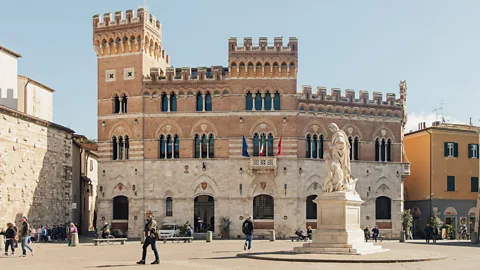 Katie McKnoulty
Katie McKnoultyDespite the world’s obsession with Tuscany as a holiday destination, Grosseto seemed to have been left off the tourist map. However, it’s now showing Italy how tourism can be done.
When I first set out for the city of Grosseto in early spring, it was a part of Tuscany I’d never visited or heard of, even though I’ve called Italy home for five years. Despite the world’s obsession with Tuscany as a holiday destination, and Florence and Siena just an hour away, Grosseto – with its historical city centre, wild nature reserve and beaches on its doorstep – seems to have been left off the tourist map, visited by few travellers – or even by Italians.
However, this once-snubbed Tuscan? city now suddenly finds itself in the spotlight as 2024’s European Green Pioneer of Smart Tourism, selected ahead of 40 cities in a European Commission award recognising small, non-traditional, emerging sustainable tourism destinations in Europe. The award aims to create a network of destinations sharing best practices for responsible tourism, acting as exemplars for other European cities and towns.
“Grosseto’s success as a Green Pioneer of Smart Tourism is the result of many years of efforts focused on enhancing our natural and cultural heritage,” said Antonfrancesco Vivarelli Colonna, mayor of Grosseto, in a statement. “This is just the beginning of our journey towards a greener and more sustainable future for Grosseto.”
As the first Italian city to win the award, Grosseto hopes to act as an example of how responsible tourism can be implemented in a country at the top of many travellers’ bucket lists. While popular destinations like Venice, Positano and Cinque Terre struggle with overwhelming tourist numbers, Grosseto’s efforts illustrate how alternative Italian destinations can encourage more responsible travel, and attract visitors looking for a slower, more meaningful travel experience in Italy.
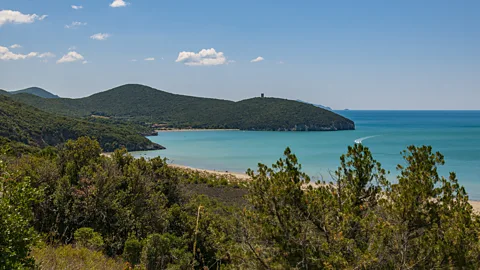 Getty Images
Getty ImagesGrosseto’s historical city centre, enclosed by remarkably intact medieval walls and filled with centuries-old buildings, is as visually rich and evocative as any Italian “centro,” but it’s the city’s natural attractions that truly set it apart. Driving just a few kilometres west from the centre, I soon found myself immersed in the vast, 9,000-hectare expanse of the Regional Park of Maremma that stretches from the Uccellina mountains to the Tyrrhenian Sea.
Here, pine trees and fields of wheat give way to flat, dusty plains populated by wild horses and native horned Maremma cows, the landscape more reminiscent of the African savannah than the Tuscan countryside. Long stretches of natural sandy beaches scattered with driftwood frame the park from the west.
When to go and what to do:
Getting there: Driving is recommended, with ample parking available just outside the city centre and at most agriturismi. Once there, consider renting a bike or e-bike, especially in summer when visitor numbers surge. Bike rental is available from Bicialand, the Albarese Visitor Centre or through your agriturismo.
Where to stay: Book a sustainable agriturismo farm stay – Tenuta San Carlo offers modern, eco-friendly accommodation a short walk or bike ride from the beach. A full list of sustainable agriturismi can be found here.
When to go: Visit from April to October to take advantage of Grosseto’s many outdoor activities, beachgoers should plan for July to September.
The preservation of this park is at the heart of Grosseto’s sustainability efforts, as is its focus on the many slow agritourism endeavours within. In contrast to Tuscan tourist hotspots like Florence and the Chianti wine region, Grosseto is one of Italy’s least densely populated provinces. The park offers varied pristine landscapes – from forests to dusty plains to wetlands and coastal areas – as well as more than 250 species of birds, plus, badgers, porcupines, wolves, wild boar and deer, some of which are rare or endangered.
But this land wasn’t always so inviting to visitors; for centuries this zone within the greater Maremma area was a swampy marshland infested with malaria-carrying mosquitoes. In the 1930s, Mussolini launched the bonifica integrale local reclamation project, aimed at restoring Italy’s marshy areas to make them arable, and incentivising Italians to purchase plots and set up agricultural businesses.
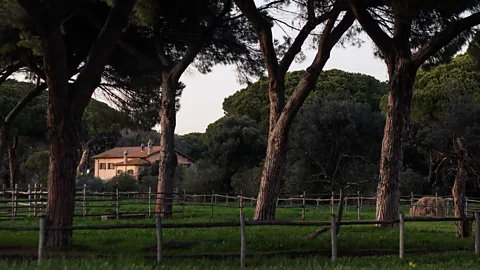 Katie McKnoulty
Katie McKnoultyToday, 30% of the Regional Park of Maremma is dedicated to agriculture, the foundation for the park’s 32 agriturismi (B&B-style accommodations on working farms), who must all meet certain environmental standards such as using recycled and eco-friendly materials, adopting energy and water-saving practices and appointing an in-house environment manager. I spent a peaceful night at the sprawling estate of Tenuta San Carlo, surrounded by towering pine trees, saltwater marshes perfect for growing rice and paddocks of striking Maremma cows with their long, curved horns.
Gifted a box of the agriturismo’s organic rice grown right outside my doorstep, I made a simple risotto in the apartment kitchen for dinner, relishing my first taste of local produce. The tenuta also cultivates organic heirloom wheat, legumes, chickpeas, alfalfa, clover, flax and oats and offers cooking classes and agriculture-focused tours.
In the morning, I took a guided tour around the estate with Ariane Lotti, fourth-generation owner and the perfect steward with her background in environmental land management. According to Lotti, whose great-grandfather first purchased the land for Tenuta San Carlo in 1936, “It’s a good way to diversify income and save the rural landscape because you’re also renovating and repurposing older farmhouses. I spend a lot of time giving tours, explaining to people how rice grows, hosting them. It’s a really important part of reconnecting people with the land and food production.”
Borrowing a bike from the agriturismo, I rode through pine tree-shaded paths down to a wild, secluded stretch of beach. Unlike the often-overdeveloped Italian seaside resorts and beach clubs I was used to seeing across the country, with their rows of plastic beach chairs and music blaring from speakers, here the only structures were improvised driftwood forts providing refuge from the sun; the only sound the lull of gentle waves. The unspoiled natural beaches, combined with lush Mediterranean vegetation, soft sand dunes and clear waters, present a different kind of Italian beach holiday.
 Katie McKnoulty
Katie McKnoultyThe park and its surrounds is also known for its many small food producers offering all manner of gastronomic tours and specialty dishes. You could spend days here sampling local cheeses, wine, honey, olive oil, beer, fresh fruit, vegetables and pasta. I headed to cheesemakers Caseificio Inno al Sole where I tasted soft white knots of buffalo mozzarella made fresh that morning, the buffalos sitting out back just behind the shop.
I chose the most leisurely pursuit possible: one of Carrozze di Maremma’s horse-drawn carriage tours sitting up front alongside founder Enrico Cheli who personally guides the carriages. Aboard the old-style coach, Cheli took us past vast, flat plains of windmills, horses and Maremmana cows, through scrubby paths and wild forests into the furthest depths of the park, telling stories about the butteri (cowboys) of Maremma who have a strong cultural significance in this part of Tuscany and still work in the park today.
“The butteri tradition started during the reign of Grand Duke Leopold II of Lorraine who started improving these parts in the 1800s,” said Cheli, a horse enthusiast from a young age. “He turned it into plains ideal for raising animals.” The skilled cowboys took over from there, herding horses and cattle, always astride a horse themselves, and continuing to maintain the ecological balance of the natural and agricultural land.
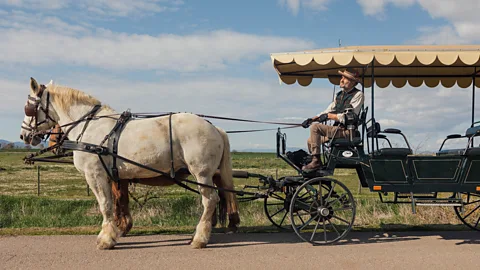 Katie McKnoulty
Katie McKnoultyFor more active travellers, the park’s flat plains are perfect for cyclists of all levels and there are many easy cycle paths, including those with direct access to the beaches. Other bike tracks are designed for more experienced cyclists, like the route climbing all the way up to the stunning 13th-Century Abbey of San Rabano high on a hill.
Plentiful bike paths also connect the park and beaches to the city centre and local attractions like the Etruscan archaeological site Roselle, once the main city in the area, where you can explore the ruins of the ancient town’s amphitheatre and Roman forum, among various public buildings, temples and baths. The cycling network affords access to the surrounding picturesque hilltop villages too – with the number of paths set to grow in the future. The city is working to light cycle paths from the centre to the sea with solar-powered streetlights to encourage even more cycling to and from the beach in summer, cutting down on high-season parking problems.
CARBON COUNT
I decided to cycle into the city centre for sunset, taking in Grosseto’s grand Piazza Dante where elderly locals conversed on stone benches. The ornate Palazzo Aldobrandeschi, a neo-Gothic style palace recalling nearby Siena’s medieval architecture, was a beautiful backdrop to the scene. I stopped at the marble-covered Cathedral of Grosseto and the Maremma Archaeology and Art Museum, full of important Etruscan artefacts found in the surrounding area. Most of the churches and museums in Grosseto’s city centre are wheelchair accessible and many have been outfitted with ramps, lifts and accessible bathrooms in recent years, an initiative not commonly seen at Italy’s tourist sites.
The entire city centre is encircled by the 3km-long Medici Walls, constructed in 1557 to defend the city; Grosseto is one of few cities in Italy with such well-preserved fortifications. As I ambled along the ramparts, now transformed into a serene tree-lined elevated walkway, I watched tourists and locals enjoying the parks dotted along the way. The city is developing a vast new green space, the “parco centrale,” that will offer myriad jogging, walking and cycling opportunities just outside the historical centre. Part of the park is already open to the public, with the entire project set to be completed within the next two years.
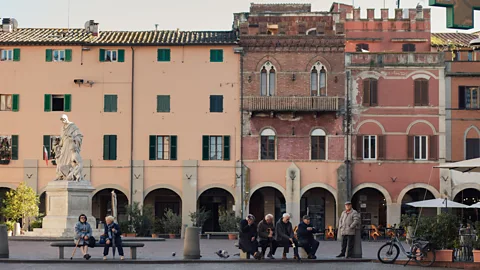 Katie McKnoulty
Katie McKnoultyGrosseto’s approach to tourism offers a blueprint for how sustainable travel can work in Italy, taking taken all that tourists love about the country – its natural beauty, authenticity, traditional culture, agricultural practices and history – and repurposing and updating it. The modern, responsible traveller wants a genuine, meaningful experience where they leave a minimal footprint, and Grosseto is ready to offer it to them.
As Maria Luisa Scorza from the Grosseto Tourism Office explained, “The culture of travel should change, for the planet, to protect the environment. But also for people – they can travel and go on holiday in a different way… we can be a model for other cities.”
Green Getaways is a BBC Travel series that helps travellers experience a greener, cleaner approach to getting out and seeing the world.




